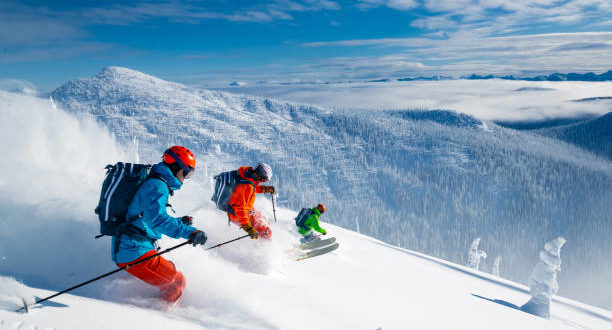Skiing a hobby in decline ?
Skiing has for years been a thriving industry that brings enormous profit to all players in the local economies. But won’t global warming bring a halt to this hobby which reached its highest level of glory in the 1980s? This problem arises today for most of our winter sports resorts! Constrained by global warming, will they dare to make their long-awaited ecological shift by finally putting nature at the heart of our concerns?

In France, winter gradually set in from November 2022, but around the end of the year holidays, there was a resurgence of winter mildness. As a result, the lack of snow is sorely felt on most of the massifs in France. We even saw that nearly 50% of the ski slopes were closed during the second week of the Christmas holidays in most of our resorts.

We can then wonder about the future of ski resorts in the face of the problem linked to global warming. Some specialists spoke of so-called “exceptional” years, implying that everything would eventually return to normal. But we notice that this is really not the case. Will most resorts play along to adapt to the climate and environment?

Some ski areas are more “sheltered” if they are above 2400 meters above sea level. In fact, most of the precipitation in winter falls in solid form (snow) and the snowpack remains cold enough to avoid melting, a stage during which it melts, particularly with the arrival of spring. If the weather is nicer, it will simply pack the snow, instead of it disappearing.

This is how some resorts, with the help of the public authorities, try to make their ski areas serviceable from the start of winter. We can take as an example the production of “artificial, so-called artificial” snow, drawn from water reserves but consuming a lot of energy in return. Will this solution be viable in the long term? Despite the fact that we live in a period marked by rising energy prices and where we are required to drastically reduce our emissions.

What solutions to consider?
A- Going up the ski slopes at altitude: example with the resort of Valloire in Savoie, explaining that there is no / little future for skiing on south-facing slopes below 2000 meters altitude . They made the bet to abandon more than 20% of their domain at low altitude (i.e. about ten tracks) for a move to altitude (opening of four new tracks). This project cost eight million euros.

This solution would not be applicable to all resorts, especially those with small massifs such as the Jura, the Vosges or the Massif Central. Going up the slopes is simply delaying the deadline for keeping alpine skiing alive for about “30 or 40 years”.
There will inevitably be a loss of customers who no longer find the interest of certain high-ranking leads despite the various investments. Moreover, we know that only 8% of French people ski, but we cannot predict how many they will be in 30 or 40 years.

B- Snow cannons: each year, 39% of national pistes use them. Initially planned to compensate for the lack of snow cover, they have now become a systematic means of preparing the slopes before the winter season.
Subsidy requests for this type of equipment are awarded by the regional council, whatever the altitude, the rest is the responsibility of the stations. But today, this can represent a big financial risk for her since it means betting on elements that may be lacking over the years: water, energy and cold. As a reminder, snow cannons work when the ambient air is close to 0°C and they need 1m3 of water to make 2m2 of snow. For one hectare of snow-covered slopes it would take about 3000 m2 of snow.

C- Snowfarming: it consists of recovering existing snow in order to convert it from one year to the next. Accumulated in a large pit then covered with a layer of wood pellets allowing it to protect itself from the summer season. There is between 20 and 30% loss (in volume) from one year to the next. In particular, it makes it possible to open the first ski slopes early in the season or to guarantee the smooth running of a sporting event.

This solution could be considered in the long term because it is described as “clean”, with “low” energy expenditure and having a “low impact” on the water cycle. But again, this remains theory because we know that a major part of these reserves come from snow cannons; not to mention the transport by truck to the relevant tracks, this would still have an environmental impact.

D- The 4-season model: abandon “all-skiing” and diversify to discover the mountains throughout the winter, with or without the presence of “white gold”. Privileging the atmosphere of a mountain village, escaping into nature, discovering local life or the surroundings, … This is now the case for more and more resorts which hope to compensate for the years of “non-snow” in winter with a range of activities throughout the year.

This may not necessarily apply to all stations depending on equipment, geographical location, weather conditions, etc. But most resorts know that they don’t really have a choice to continue to make a profit outside the winter season, to simply continue to exist.



